by Maya Drozdz
photos by Warren Lemay
The Cincinnati Observatory is known as “The Birthplace of American Astronomy.” It houses one of the oldest working telescopes in the world, was the first public observatory in the western hemisphere, and is now the oldest functioning observatory in the US. The main telescopes are an 11-inch Merz and Mahler refractor from 1845 and a 16-inch Alvan Clark and Sons refractor from 1904.
In 1842, astronomer and educator Ormsby MacKnight Mitchel–the Carl Sagan of his era–began raising money for a telescope and an observatory building to house it. Contributions came from all walks of life and every trade, leading to the purchase of a lens of incomparable quality that had already been ground but never installed. The completed telescope, made of mahogany and brass, was shipped from Munich to New Orleans and then up the Mississippi and Ohio Rivers to Cincinnati.
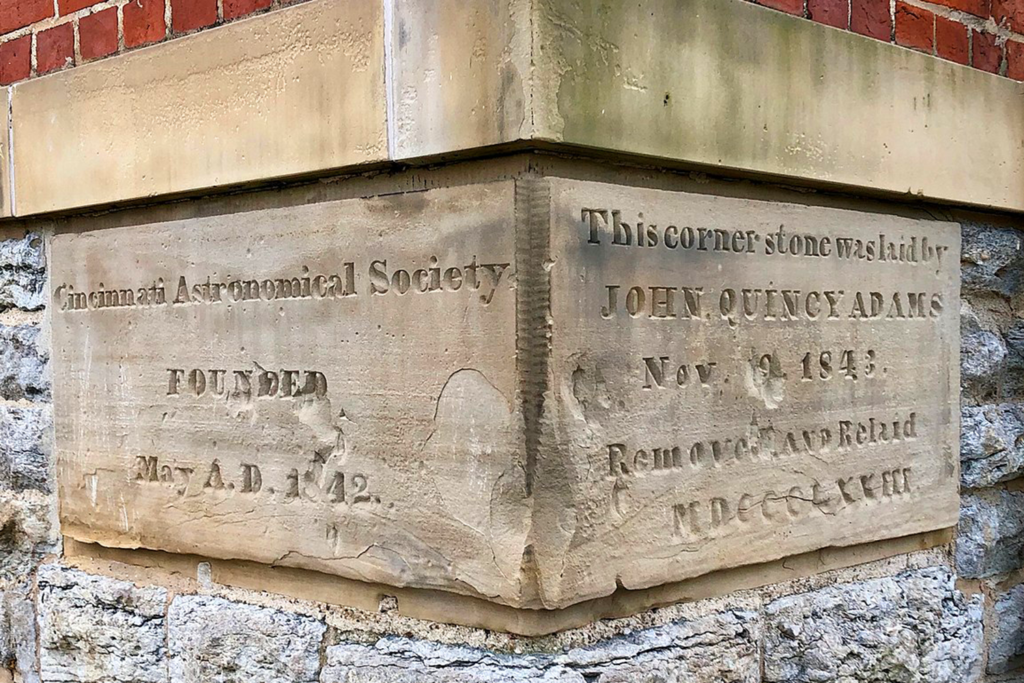
Nicholas Longworth (at the time the second largest landowner in the US) donated four acres of land at the top of Mt. Ida for the Observatory. On 9 Nov 1843, former US President John Quincy Adams gave the dedication address and laid the cornerstone for the building. Mt. Ida was renamed Mt. Adams in his honor.
Construction of the facility was supervised by Mitchel, one of the founders of the Cincinnati Astronomical Society who then became the observatory’s first director. He wrote and edited the first astronomical publication in the US, The Sidereal Messenger, which helped to popularize the field.
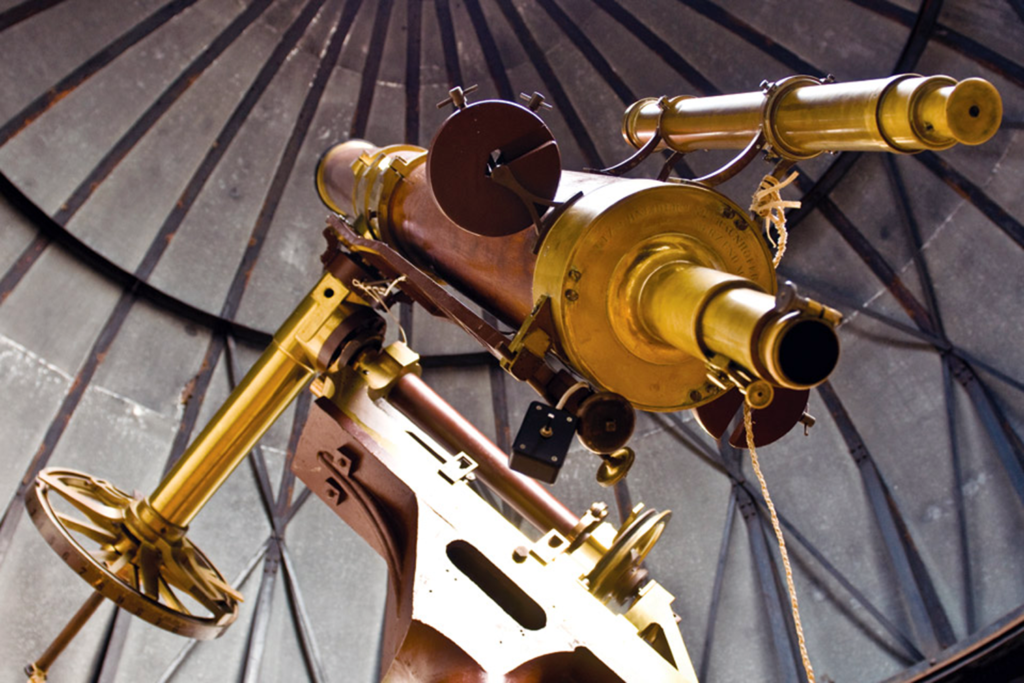
Mitchel, a Union, KY native who had been educated at West Point alongside Robert E. Lee, became a Union Major General during the Civil War, dying of yellow fever in 1862. Ft. Mitchell was named in his honor (the second “l” was a spelling mistake when the area was incorporated).
During this time, the observatory fell into disrepair and in 1867, Alfonso Taft (President Taft’s father) donated $4,000 for its refurbishment. The following year, Cleveland Abbe was appointed director. In 1869, he published the first weather reports and, the following year, left for Washington DC to set up what is now the National Oceanic and Atmospheric Administration.
In 1873, in order to escape the increasing pollution of downtown Cincinnati, the telescope was moved to Mt. Lookout, five miles east of the city limits. Four acres of land were donated by Board member John C. Kilgour, whose $10,000 donation also underwrote much of the construction of the new building.
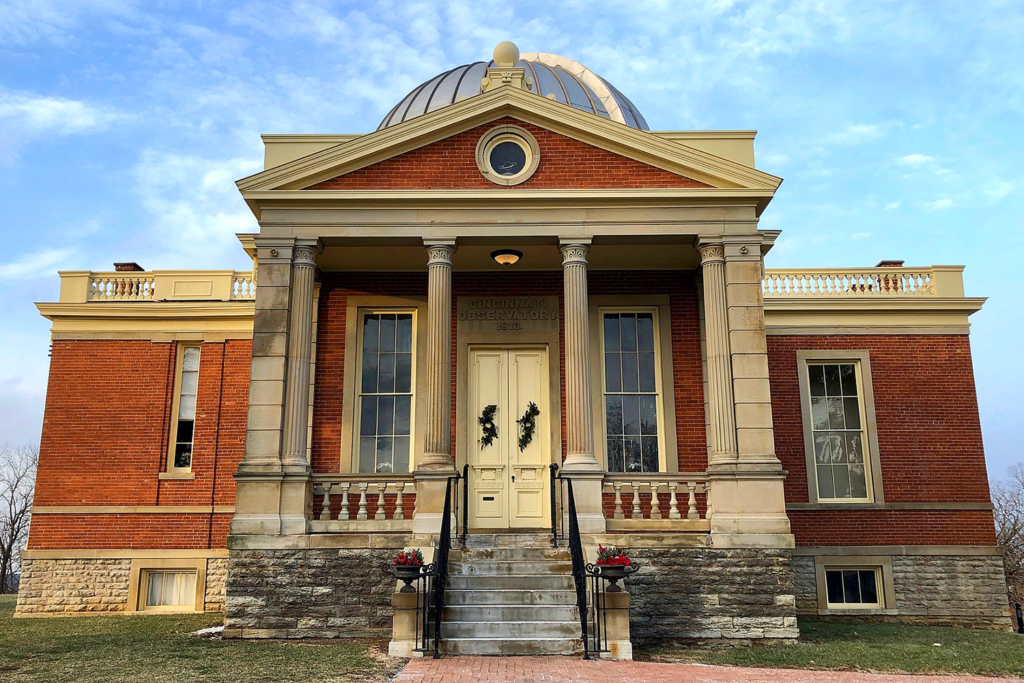
Architect Samuel Hannaford was commissioned to design the Neo-Classical/Georgian Revival structure, with its stately symmetrical facade distinguished by a portico. The style is typical of academic institutions of the time. The building is designed to ensure separation between the telescope and the structure, preventing vibrations from disrupting viewing. The pier extends eight feet below basement level. Its ribbed, metal dome was installed in 1895.
Hannaford, of course, may be Cincinnati’s most famous architect, and likely the most prolific as well. Five years after this project (his first public building), he designed iconic Music Hall in Over-the-Rhine, in addition to a long career filled with many other noteworthy commissions.
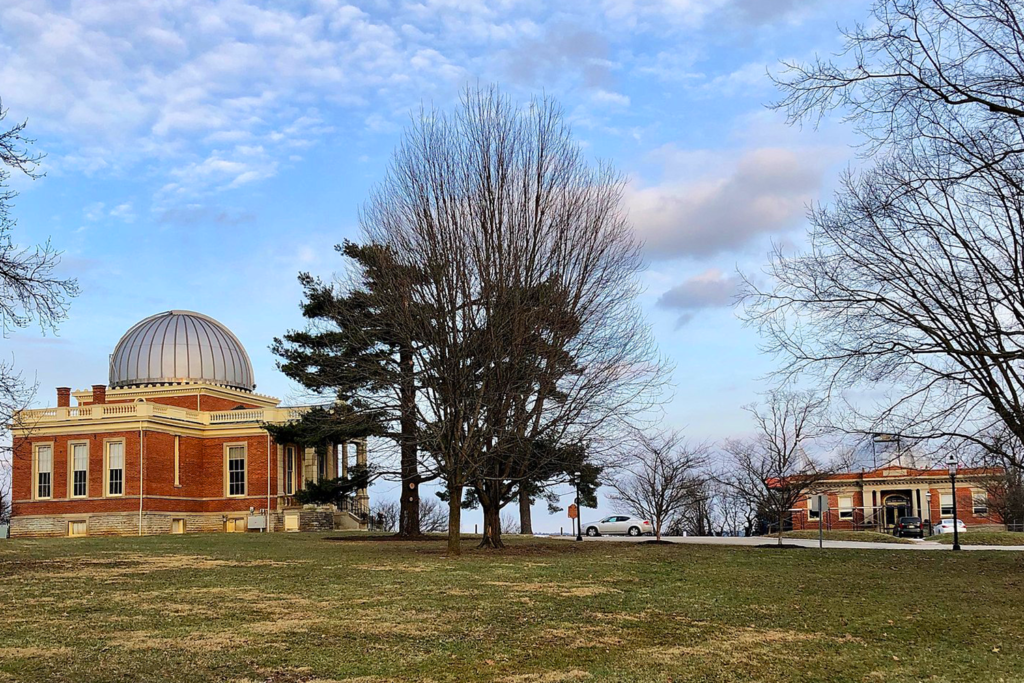
In 1904, the Observatory purchased a larger telescope from Cambridgeport, MA, the 16-inch Alvan Clark and Sons refractor, and built its second building. The Greek Revival Ormsby McKnight Mitchel building was designed by Tietig & Lee and completed in 1904.
Tietig & Lee was founded in 1903 by Walter H. Lee and Rudolph Tietig, architects who had trained at the Cincinnati Technical School and MIT. Their institutional, commercial and residential buildings were frequently designed in Beaux Arts and other traditional styles, including most of the Cincinnati Bell Telephone suburban branch exchanges built at the time, some of which still stand. Their Mitchel building shows a similar reverence for traditional design.
Once the second building was completed, the older telescope from Munich was moved into it, while the newer telescope from Massachusetts went into operation in the old building.
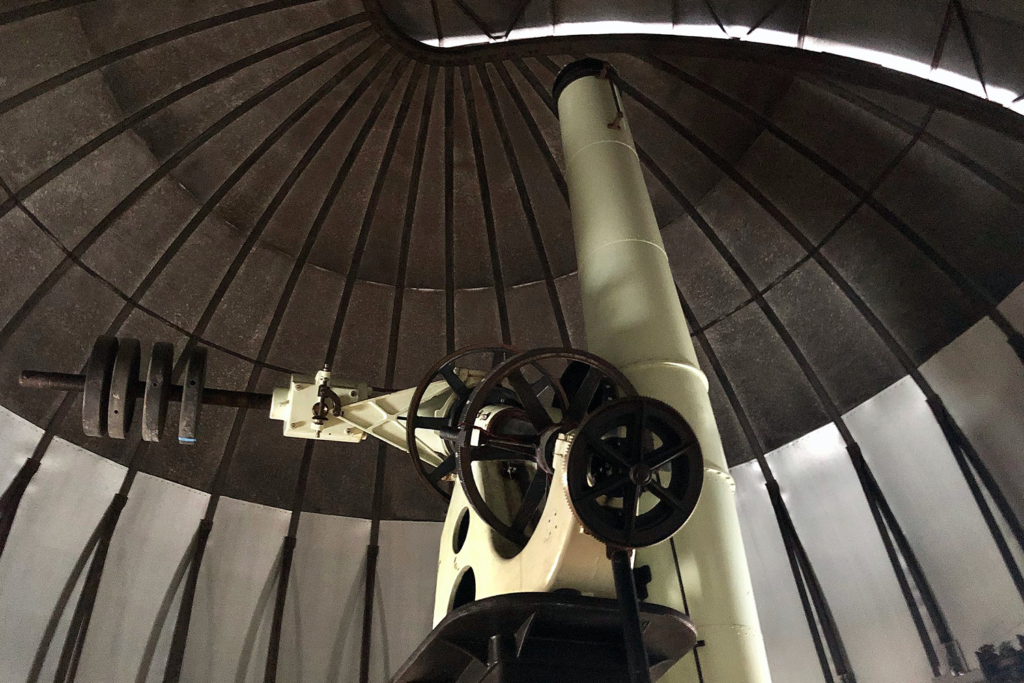
Following World War II, the Cincinnati Observatory remained active due to the efforts of one of its directors, Dr. Paul Herget. He became one of the pioneers of the use of electronic computing machines for astronomical calculations. The International Astronomical Union Minor Planet Center was housed at the Cincinnati Observatory under Herget’s directorship from 1947 until his retirement in 1978.

In 1979 the Observatory formally became part of the Physics Department of the University of Cincinnati. The Observatory continued to be used for public education as well as for research by graduate students and others at the University of Cincinnati.
During this time, however, the observatory sat relatively idle as a research institution, its telescopes and buildings slowly deteriorating. In the 1980s, both telescopes were painstakingly brought back to working order through the passion of the late astronomer, Paul Nohr. Unfortunately, a decade later, the University of Cincinnati contemplated selling the land to developers who were interested in leveling the site and erecting condos.
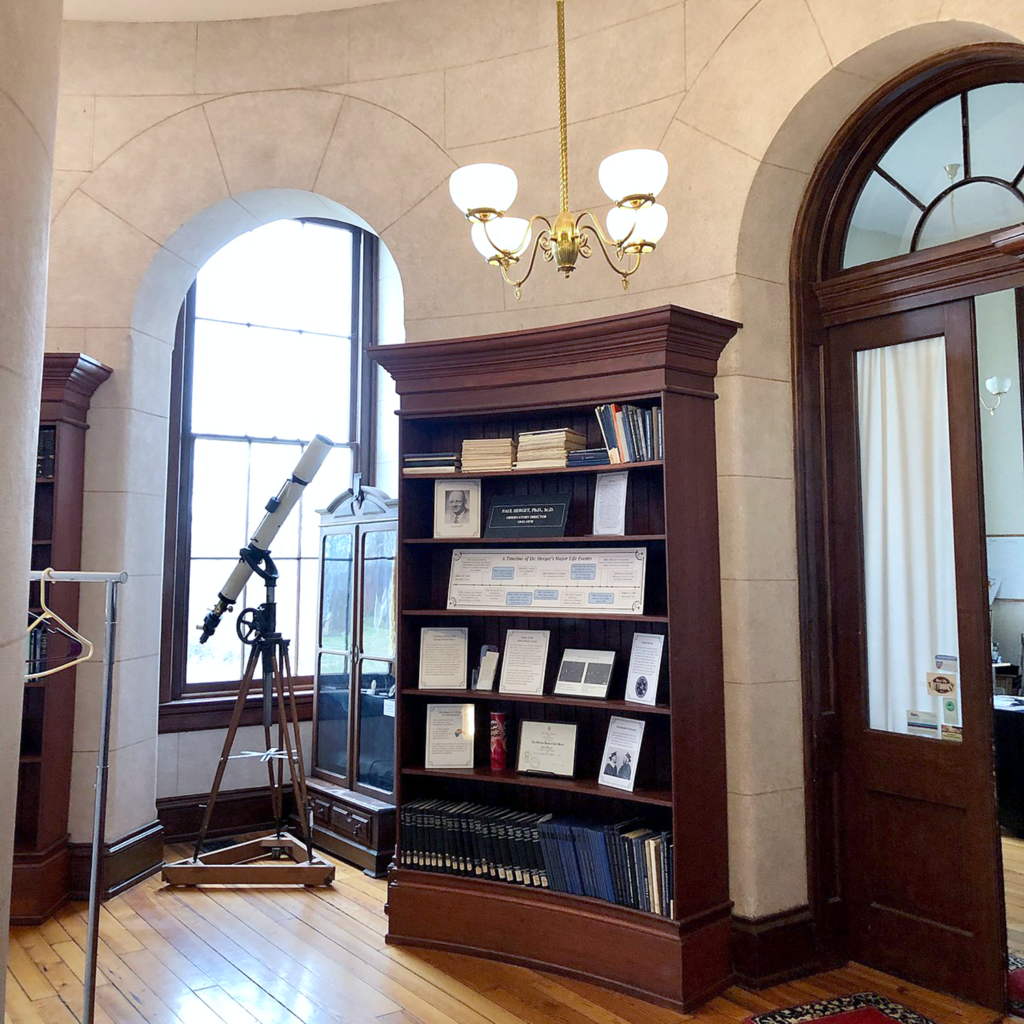
A coalition of neighbors, historians, preservation advocates, and amateur and professional astronomers took action to save the observatory. In 1999, the Cincinnati Observatory adopted a bold new mission: no longer would the observatory try to compete as a research facility, but return to its original mission, now renewed, as a center for astronomy education for all.
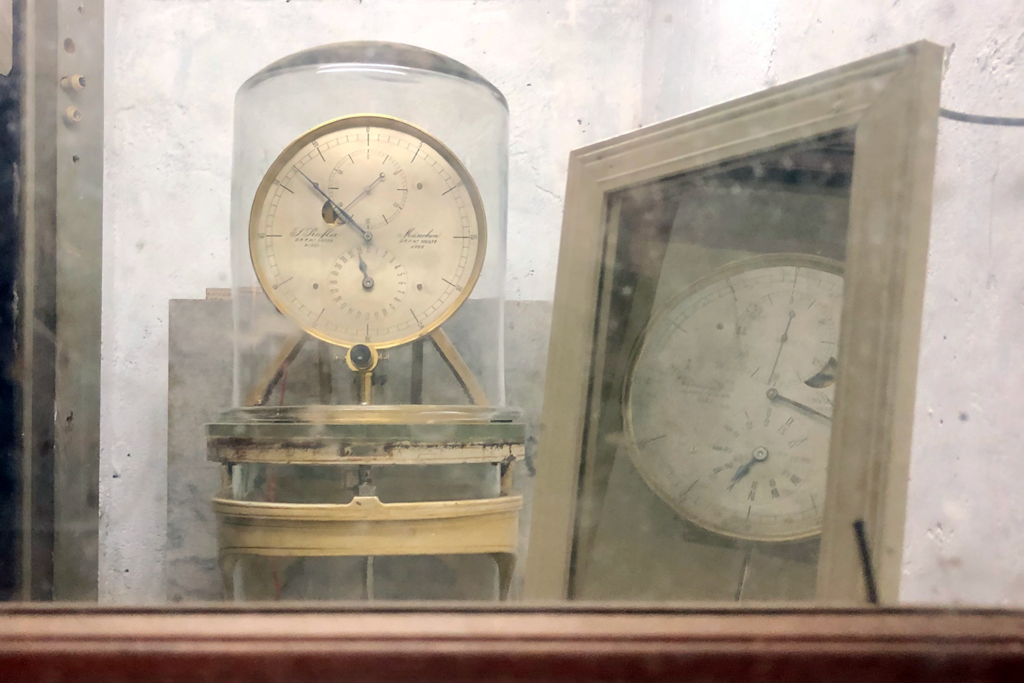
The proximity to an urban area is no longer a detriment, but provides access to a sizable and diverse new audience that includes school and scout groups as well as the public at large. This National Historic Landmark also doubles as a unique event venue. Thus, Ormsby McKnight Mitchel’s goal of popularizing astronomy, initially pursued 180 years ago, endures in the 21st century.
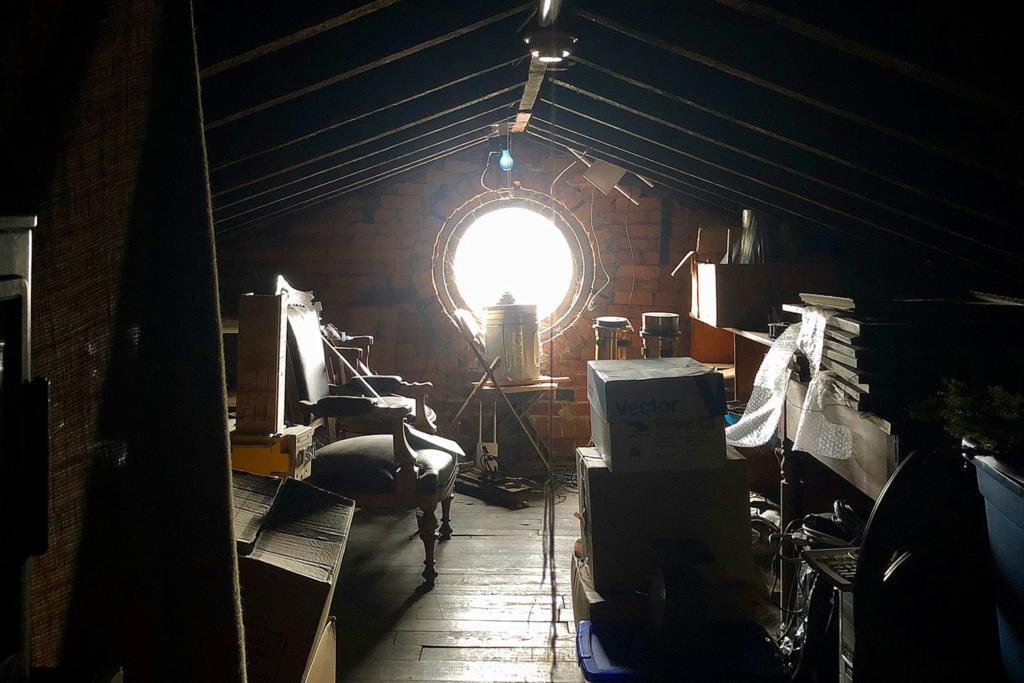
While the Observatory is closed due to the ongoing pandemic, you can enjoy videos on its YouTube channel from the comfort of your home. To see the telescopes in action, check out this video of astronomer Dean Regas:
The historic buildings are designated a National Historic Landmark, and the grounds provide a serene, park-like setting, yet centrally located within the city of Cincinnati. The campus is located within the Observatory Historic District in Mt. Lookout, and some of the twelve elegant residences in the district have direct Observatory connections. The area was developed by brothers Charles and John Kilgour to attract wealthy property owners, who were drawn to to Cincinnati’s suburbs by the development of new and improved transportation systems. A self-guided walking tour is available in PDF form.
References: